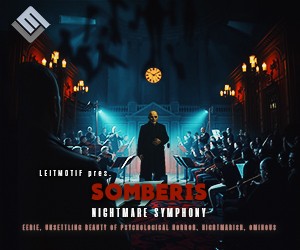In this tutorial we will teach you how to make sweepers and risers. Sweepers and risers are very important element of the EDM tracks who’s purpose is to hide something in a track or create tension, to spice up certain empty elements of the arrangement, or introduce something big which will happen soon, e.g. a breakdown.
Although we are using Ableton as the main sequencer in this tutorial, you can use any sequencer of your choice.
There are many excellent sample libraries is out there where you can find great sweepers which you can use in your productions. The bad thing is that most of them are already used in some kind of dance music, so if you like to be unique and stand out you’ll want to either heavily effect the samples to hide them or create your own sweepers.
Let’s get started!
Step 1. Create a Track
Create a MIDI channel and create a MIDI clip which is eight bars long. Next draw an eight bar long note on C3. The root key is very important because it will determine the overall pitch of our riser.
Next drag and drop a synth which has an ADSR volume and modulation envelope and some LFOs. In our case I used one of my favourite synths, the Sylenth.

Step 2. The Pitch Modulation
The technique that we are going to use is pitch modulation. So press init preset, and use pitch modulation AB on the modulation Envelope 1 in Sylenth .
Turn the destination amount all the way to the left, and push the decay fader until it reaches almost the peak point. Now play it you will hear a Swedish house mafia intro Riser.
How simple is that!

Step 3. Use the LFOs
The thing is that if you want to use a more complex sweeper then you have to use LFOs.
So let’s turn the first LFO Rate to 1/16 and the gain to 6.81. Set the waveform to sine. Select pitch AB to destination and turn the knob clockwise until you reach the highest number.
Now you can hear a strange gate pitch modulation. It is cool! You can use it where ever you want. Try experiment with other wave forms and other values.

Step 4. Best of both worlds
If you want to be more complex, use ADSR and LFO parameters together. For example, create another ADSR mod envelope which will modulate the LFO rate knob. Turn the destination all the way up and use the decay and the sustain parameters on variable values. Turn the LFO into 2/1! You will hear a gradually increasing pitch riser.

Final Words
Of course you can always use other waveforms in oscillators. I only use sawtooth. In order to be more unique you can use noise, triangle or sine forms instead of sawtooth. You can enlarge the polyphony and voice number and detune the waveforms. It will create a more complex and pleasant results.
In the next quick tip I will show you how to use effects and side chain compressors and how to stack different synths to create more complex risers and sweepers! Until then happy music making!
Original source: http://audio.tutsplus.com/tutorials/sound-design/quick-tip-how-to-make-sweepers-and-risers-part-1/









